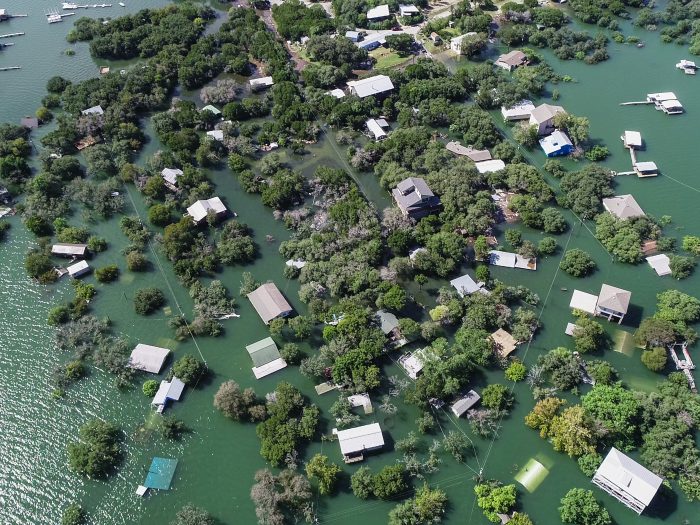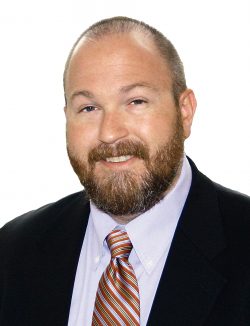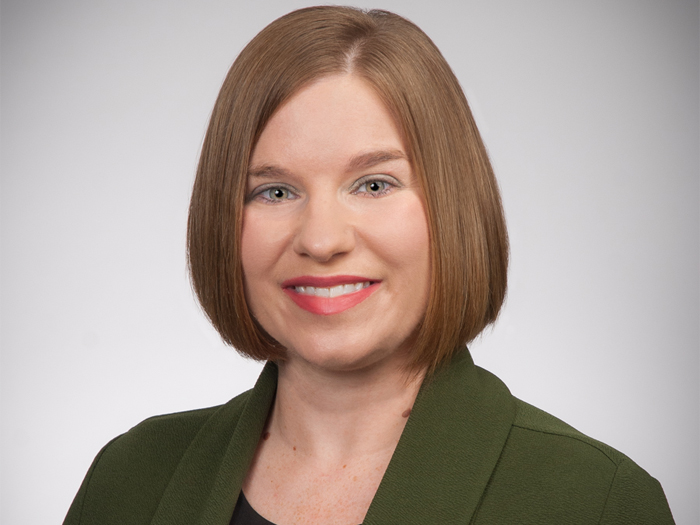Sponsored: Munich Re US
Three Ways to Make Communities More Resilient to Natural Catastrophe

Being resilient means not just recovering quickly from catastrophe but also emerging even stronger and better prepared for the next challenge. Insurance has always been a cornerstone of resiliency. Without this protection, communities devastated by floods, wildfires and wind storms would lack the resources to rebuild.
Unfortunately, too many communities are underinsured or uninsured for natural catastrophe losses that are only projected to grow more severe. According to Munich Re NatCatService, as little as 28% of the $5,200 billion economic losses from Natural Catastrophes were insured over the period 1980-2019.
This protection gap is growing due to three factors:
- More people are living and working in exposed regions — such as along coastlines — but not buying adequate levels of insurance to match the increased exposure, particularly for the peril of flood.
- Real property is not often built to withstand flooding, strong winds and other types of severe weather, meaning damage wrought will be severe.
- Climate change is increasing the frequency and severity of many natural perils, including flash flooding, droughts and wildfires.
“Together, these factors drive up the total economic impact of a natural disaster and make it more difficult for communities to get back on their feet. Closing the protection gap and improving building resilience will mean addressing all three pieces of the puzzle,” said Mark Bove, meteorologist & Natural Catastrophe Solutions Manager, Munich Re US.
Here’s how one global reinsurer is taking on the challenge.
1. Creating Nat Cat Risk Transfer Solutions Through Public-Private Partnerships

Mark Bove, Meteorologist & Natural Catastrophe Solutions Manager, Munich Re US
“Increasing the take-up rate of insurance is key to building resiliency in communities,” said Raghuveer Vinukollu, Senior Vice President, Team Lead – Natural Catastrophe Solutions, Munich Re US. “The Insurance Information Institutes reports that only one in six people have flood insurance. Other studies say it is even less than that. According to Milliman, only about 5% of single-family homeowners have flood insurance.”
Public-private partnerships (PPPs) are critical in building the backstop against catastrophic losses that neither entity could provide on its own. While insurers can bring their financial strength, rich data and risk expertise to bear, public entities can help to increase the take-up rate of coverage by encouraging communities to adopt risk mitigation regulations and educating consumers.
The National Flood Insurance Program is a perfect example of such a partnership with the federal government, in which multiple insurers and reinsurers participate. Through this program, thousands of property owners have access to coverage that would likely be cost-prohibitive if offered entirely by private markets.
Multinational risk pools are also examples of PPPs that seek to mitigate the economic damage of natural catastrophes on a broad scale.
“The Caribbean Catastrophe Risk Insurance Facility and FONDEN (Mexico’s fund for Natural Disaster) are two such pools that Munich Re participates in,” Vinukollu said. “Almost like a mutual insurance company, the member countries of these funds retain some of the risk themselves and then transfer the rest to reinsurers through parametric policies. The result is a cooperative risk transfer strategy that increases the level of protection in a financially feasible way.”
2. Strengthening Structural and Natural Defenses Against Unforgiving Weather

Raghuveer Vinukollu, Senior Vice President, Team Lead – Natural Catastrophe Solutions, Munich Re US
The second key piece of resilience is mitigating physical damage by building stronger structures and designing natural barriers.
“We have an issue in the United States that most of the construction of our homes and businesses is not resilient to the natural catastrophes we see today, let alone what might occur in a future climate,” Bove said.
“There are a few exceptions to this rule. Florida has done an excellent job of improving their building codes over the past 20 years based on their experience with Hurricane Andrew in 1992. Unfortunately, we have not seen many states follow through with similarly strict building codes, code enforcement or contractor training.”
Though insurers can’t implement new building codes, they can offer incentives to property owners and contractors for using materials or techniques that better withstand whatever perils are common to that region. In a hurricane-prone area, building several feet above predicted flood levels or using materials that can withstand stronger and longer wind gusts can prevent thousands of dollars in damage to a single property.
Nature-based solutions like mangroves and wetlands also mitigate damage by weakening the impact of hurricanes as they make landfall. It’s estimated, for example, that coastal wetlands off the coast of New Jersey may have spared the state roughly $600 million in property damage from flooding during Superstorm Sandy.
“These nature-based barriers also suffer damage and need to be restored. There are opportunities there for insurers to step in and to ensure that communities have the resources to rebuild,” Vinukollu said.
3. Tackling Climate Change by Advocating for “Greener” Policies and Behaviors
The third pillar of increasing resilience is perhaps the most difficult of all – diminishing the severity of the natural perils themselves. Though clear links cannot be drawn between climate change and certain perils like wind-driven events, there is a clear connection between warming temperatures and heavier rainfall, more severe flooding, droughts and wildfires.
Closing the protection gap will require efforts to reduce or reverse the effects of climate change.
“The topic of climate change is not a new one for the Munich Re Group. For almost 50 years we have been studying and communicating with our clients about natural catastrophe risk. We first published our views on the risk of a warming planet in the 1970s,” Bove said.
More recently, Munich Re has been at the forefront of global climate change mitigation efforts as an active participant in negotiations of the Paris Accords in 2015, and in the compilation of the Intergovernmental Panel on Climate Change reports that are issued by the United Nations every four years.
“We’re supporting the transition to greener energy infrastructure globally as well. We invest in solar power plants and wind farms across Europe and provide insurance solutions covering the physical property of green power generation, whether it’s solar panels or wind turbines, as well as power generation covers,” Bove said.
The Munich Re Group has been Carbon neutral in their insurance operations since 2015. The company also joined the Net Zero Asset Owner Alliance with a commitment to decarbonize their portfolios by 2050.
Ultimately, though, the most effective strategy that the reinsurer deploys in combatting climate change is communication, leveraging decades of institutional knowledge about the risk to educate clients and other stakeholders.
“Ultimately an educated world community will also be more interested in looking for ways to transfer or mitigate climate risk,” Vinukollu said. “Because insurance is not going to solve climate change alone. We need to work together as a society to address all aspects of this problem. That is why we proactively seek partners to tackle these major issues that will affect our society and the rest of the world through the 21st century and beyond.”
To learn more, visit https://www.munichre.com/en/risks/climate-change-a-challenge-for-humanity.html.
This article was produced by the R&I Brand Studio, a unit of the advertising department of Risk & Insurance, in collaboration with Munich Re. The editorial staff of Risk & Insurance had no role in its preparation.










